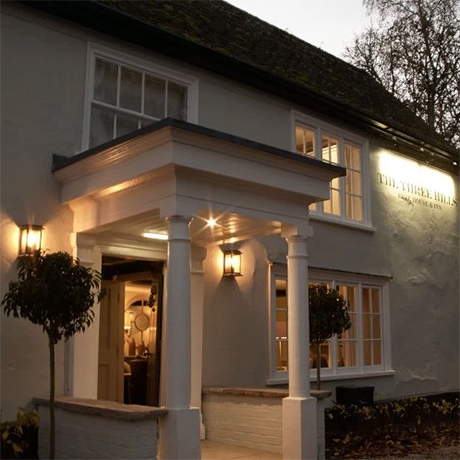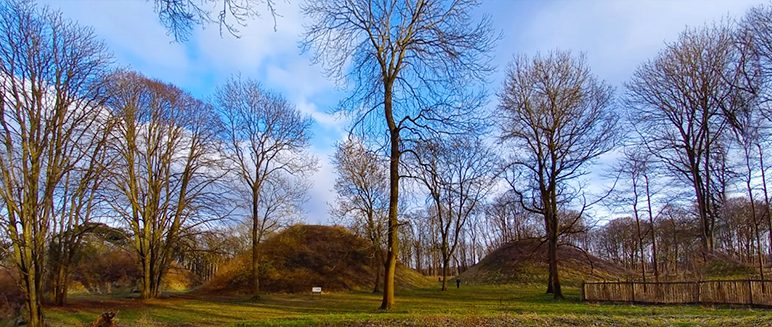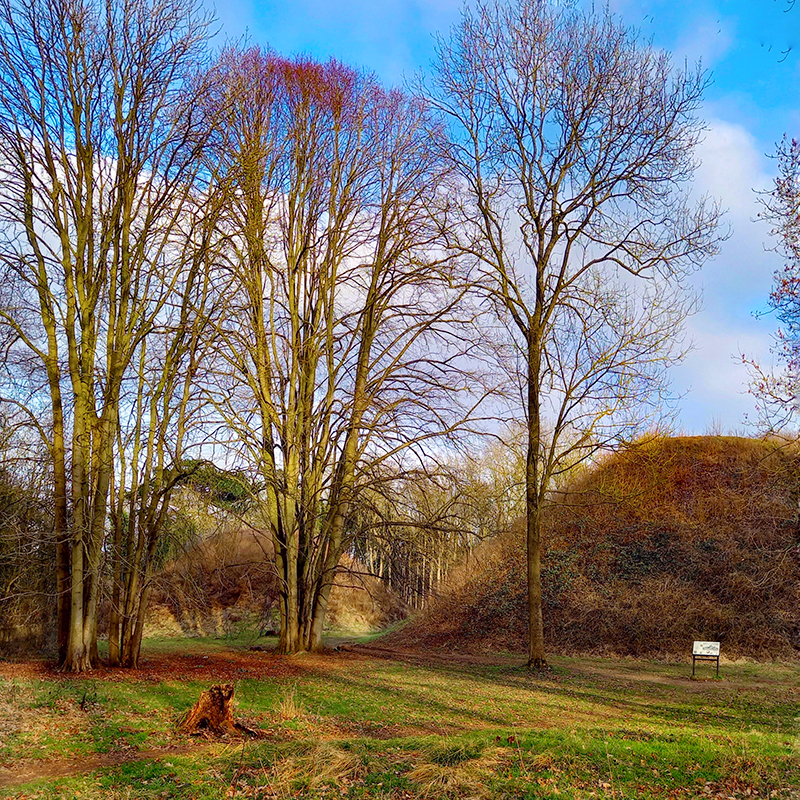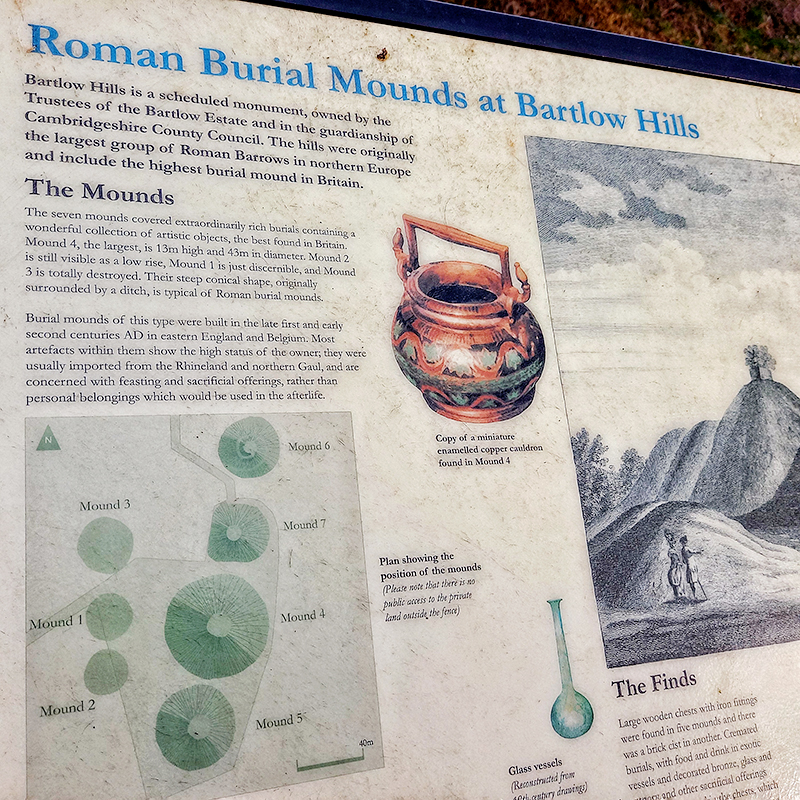Only 20 minutes from Stambourne lies a sight to behold: Bartlow Hills, the tallest Roman burial mounds north of the Alps.
What are they? Bartlow Hills is a collection of 4 ancient Roman burial mounds, probably built between the 1st and 2nd centuries AD, situated on the edge of Bartlow village, on the border of Cambridgeshire and Essex.
USEFUL INFO
• JOURNEY: approx 20 mins by car
• COUNTY: Cambridgeshire
• ADMISSION: free entrance
HOW TO GET THERE
Head over to Steeple Bumpstead and take the road to Helions Bumpstead. From there, take the road to Castle Camps and follow on to Bartlow, before turning left at the crossroads towards Saffron Walden. 100 metres after the Three Hills pub, a small on entrance on the left marks the short footpath to the hills.
A burial mound is an artificial hill of earth and stones built over the remains of the dead. In England the equivalent term is barrow; in Scotland, cairn; and in Europe and elsewhere, tumulus. “Tumulus”, Latin for “mound” or “small hill” is a mound of earth raised over a grave.
The practice of tumulus burials, widely prevalent during the prehistoric ages, was common throughout much of the world, with prehistoric tumuli to be found abundantly in almost all parts of Europe and Asia from Britain to Japan. This type of cemeteries occur with frequency also in northern Africa, and in many parts of North and South America.
It’s surprising to think that such an ancient ruin is so close to Stambourne yet is largely unknown!
Bartlow Hills was originally a cluster of 7 Roman burial mounds built between the 1st and 2nd century AD.
Nowadays only 4 barrows remain, 3 of which are still accessible to the public, with the fourth being part of a private estate just visible from the footpath.
The largest mound, which is around 13 metres (40 foot) high, can be climbed via steep wooden stairs but which are in a fairly poor state of repair. Proceed with caution!
Excavations between 1832-40 found remains of ancient wooden chests, vessels of bronze glass and pottery, most of which were lost in a fire at Easton Lodge in 1847. They even found a cremated body.
The Finds
Artefacts recovered from the excavations included a miniature enamelled copper cauldron found in Mound 4.
It is believed that most of the goods were imported from Europe.
Other finds included an iron folding chair and the remains of flowers, box leaves, a sponge, incense and liquids including blood, milk and wine mixed with honey.
A small Roman villa, occupied until the late 4th century, was situated north of the mounds and was excavated in 1852.
No further explorations were carried out until Reading University executed a geophysical survey in 2006 and further excavations in 2007.
During such work it was determined that the bank of earth was originally much higher than it now appears, but the location of the villa could not be established.

WANT TO GRAB A BITE?
The Three Hills pub is a couple of minutes’ walk from the burial mounds and offers food, private events and you can even stay there! It’s also dog friendly.
thethreehills.co.uk
Sources: Wikipedia, Encyclopædia Britannica, University of Reading.
Buy us a coffee! ☕

For over 15 years the Stambourne website has been entirely funded by one single person. Now we are asking for a small token donation, to keep things running smoothly. If you find value in our website and in what it offers, consider buying us a virtual coffee ☕
Use the button below to make a contribution, however small, to the upkeep and running costs. We would be immensely grateful for the support. Thank you! And cheers!
Click here for other ways to support the Stambourne website »
Latest destinations for A day out in…
- A day out in… Foulness IslandFoulness Island in Essex was once only accessible via the deadly Broomway. Approach with caution! Just when you thought you knew Essex, did you know… Read more: A day out in… Foulness Island
- A day out in… Bartlow HillsOnly 20 minutes from Stambourne lies a sight to behold: Bartlow Hills, the tallest Roman burial mounds north of the Alps. What are they? Bartlow… Read more: A day out in… Bartlow Hills










